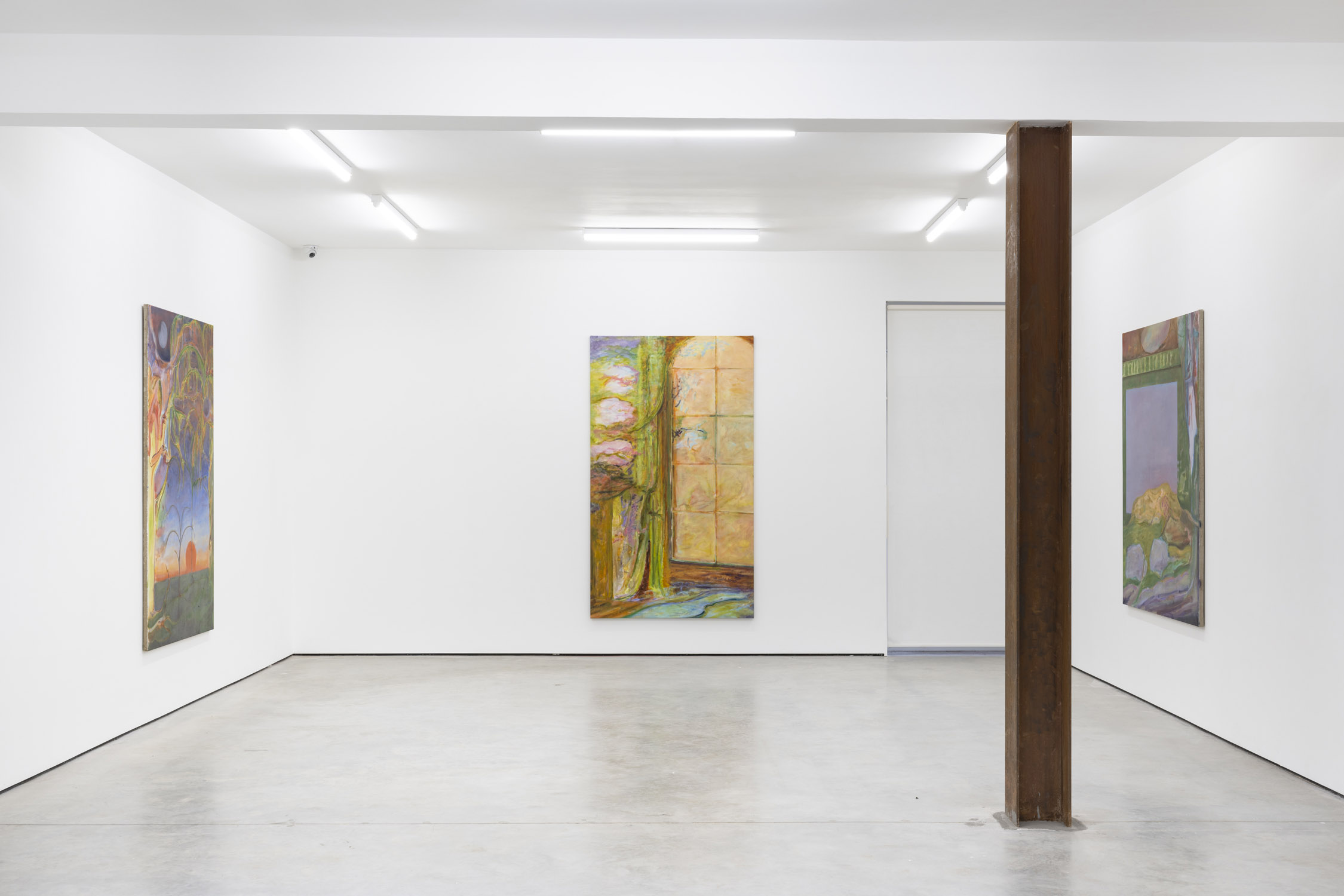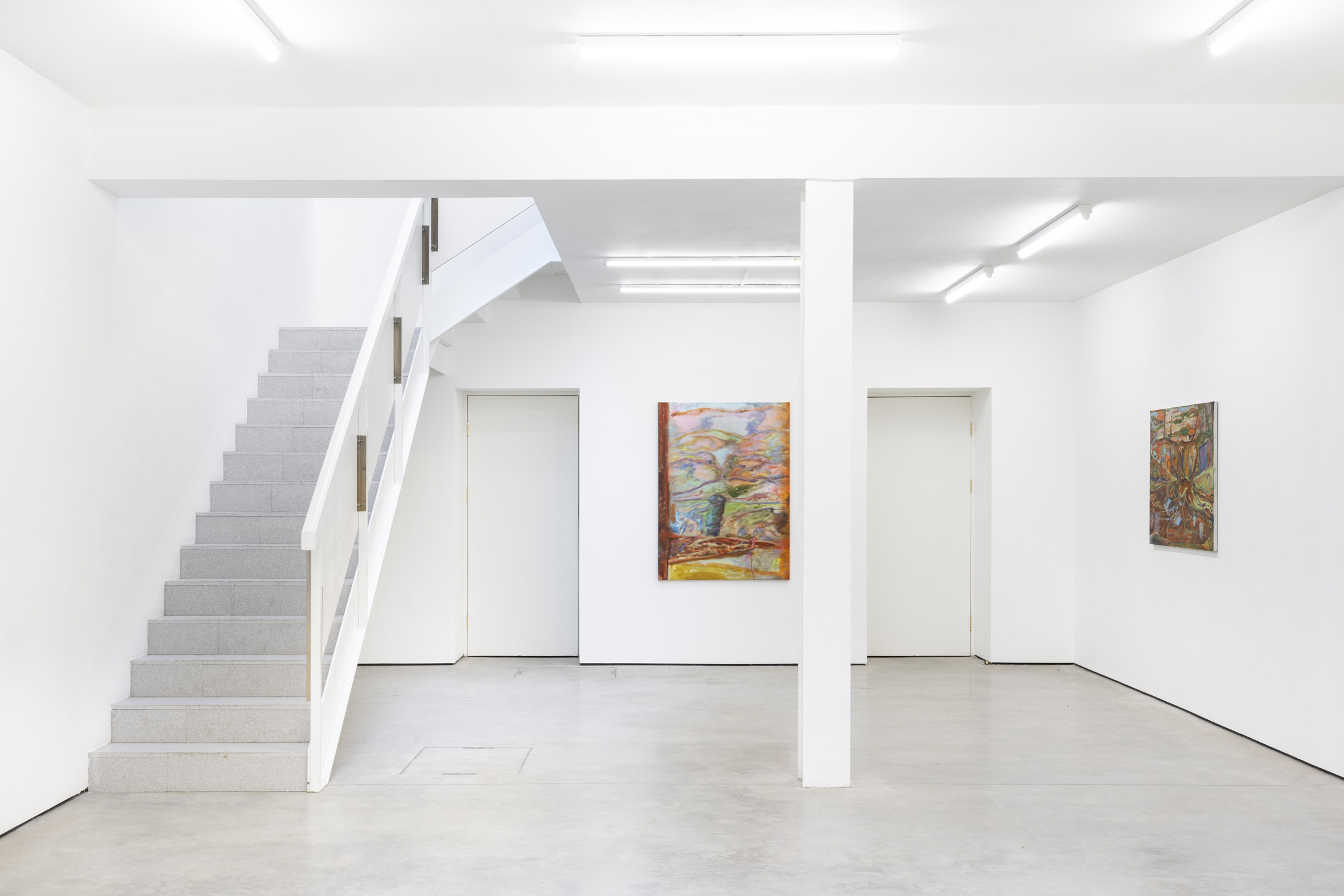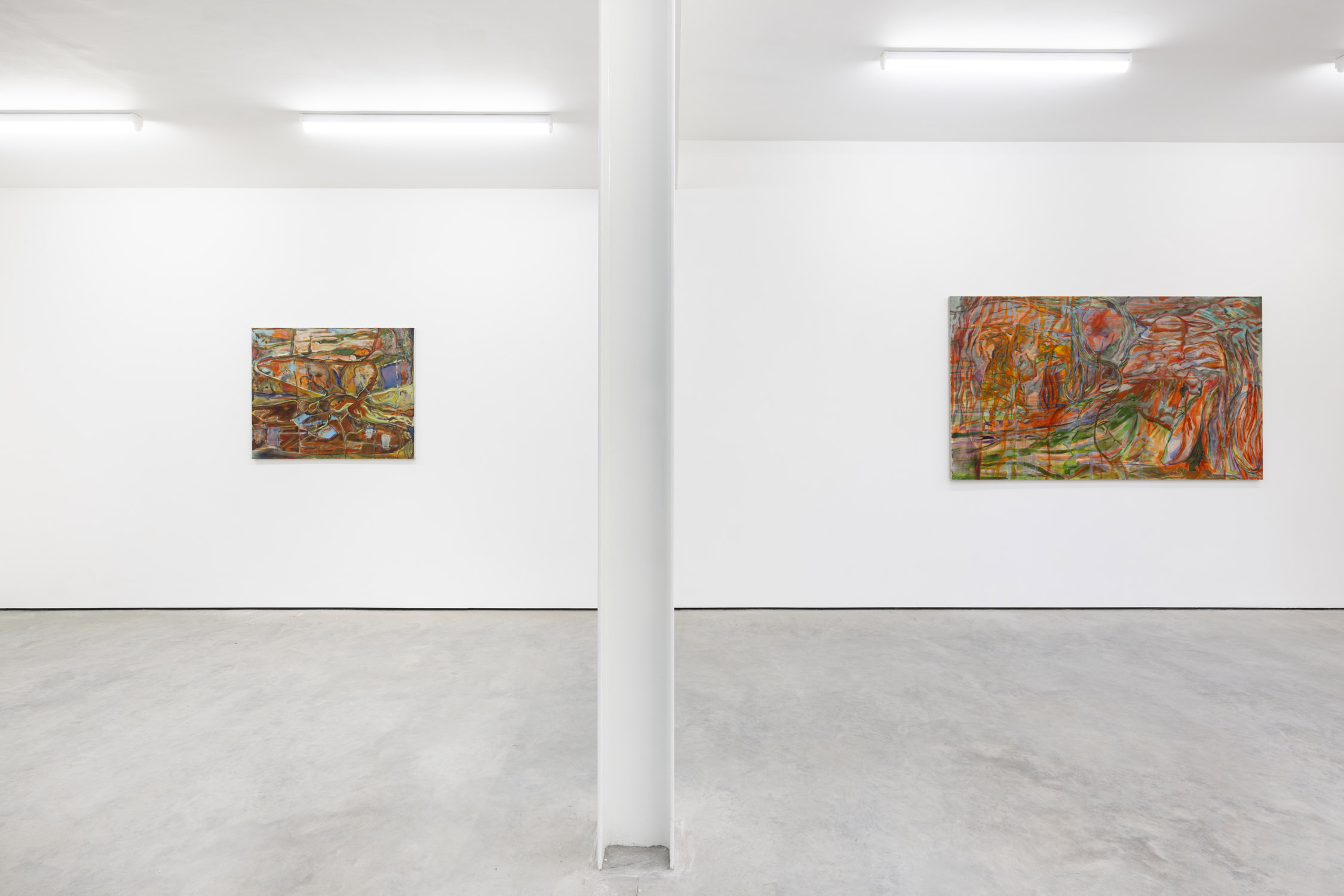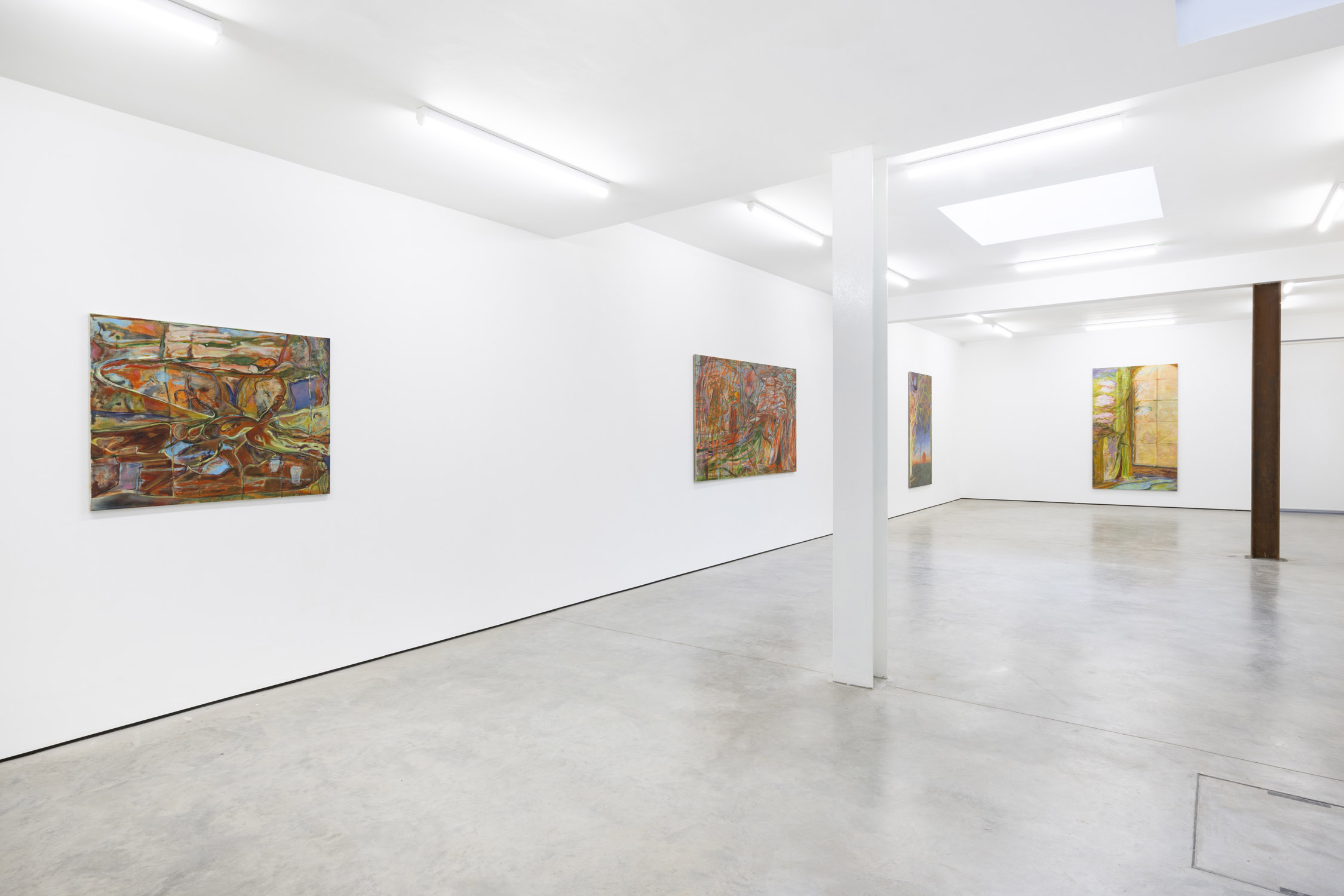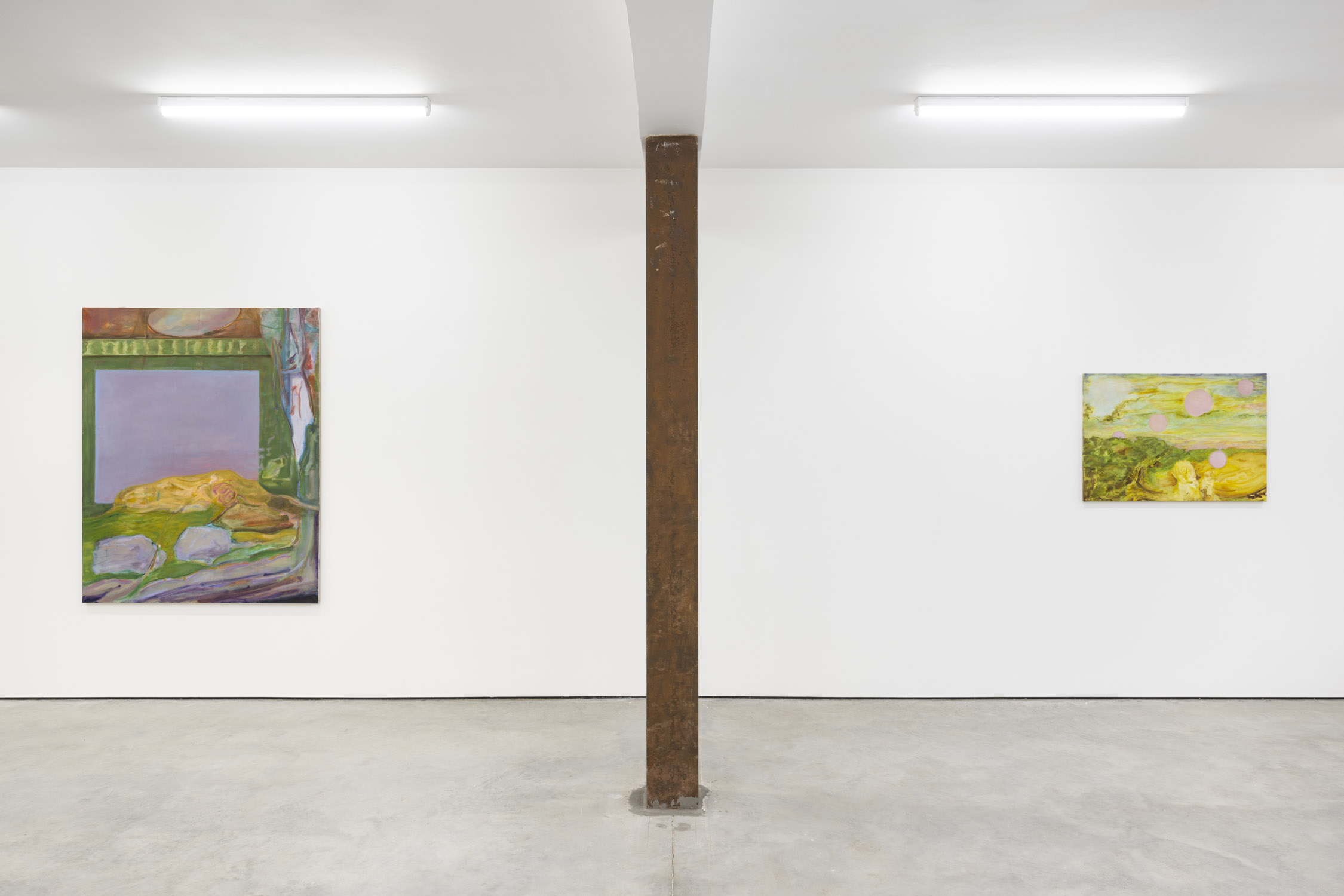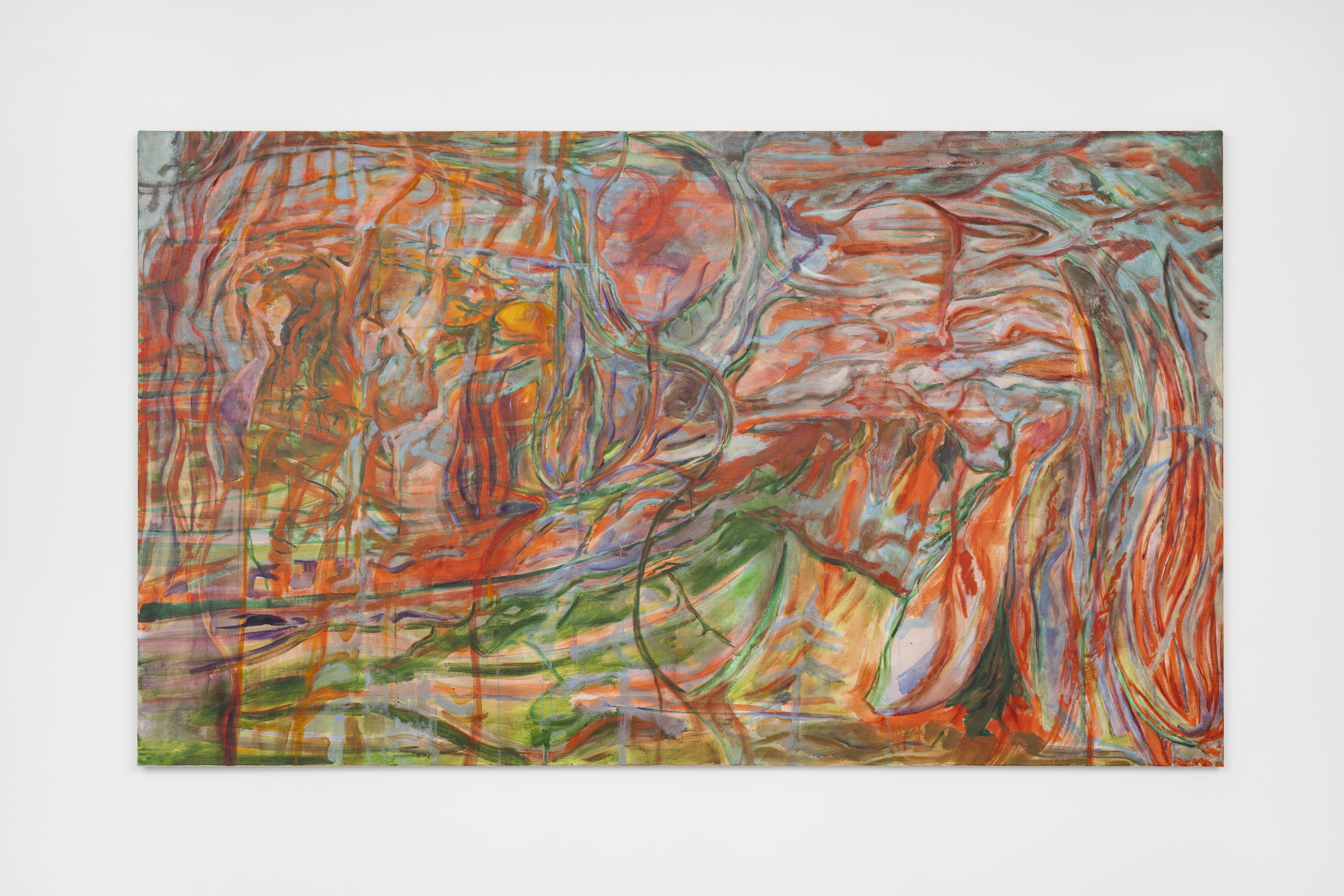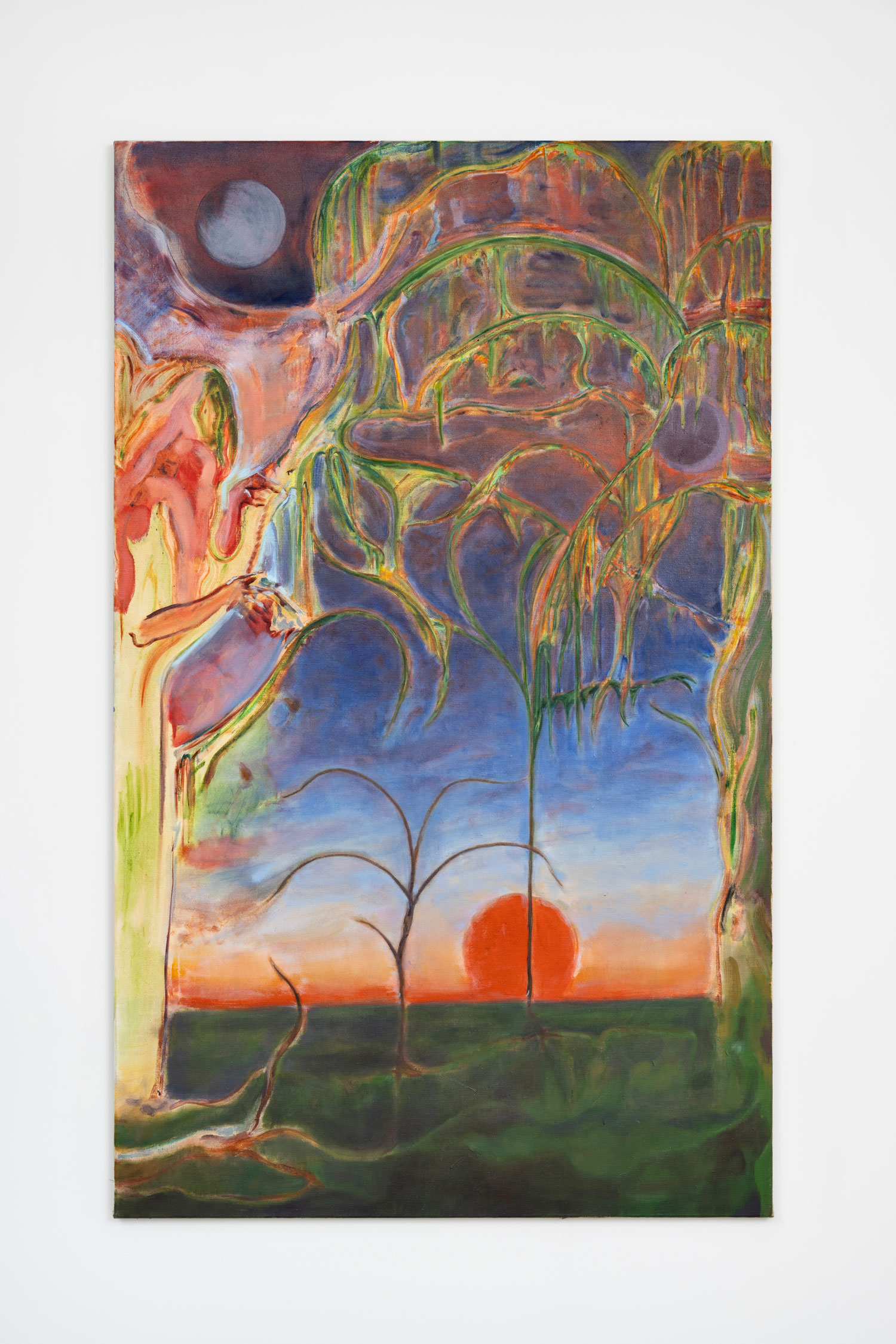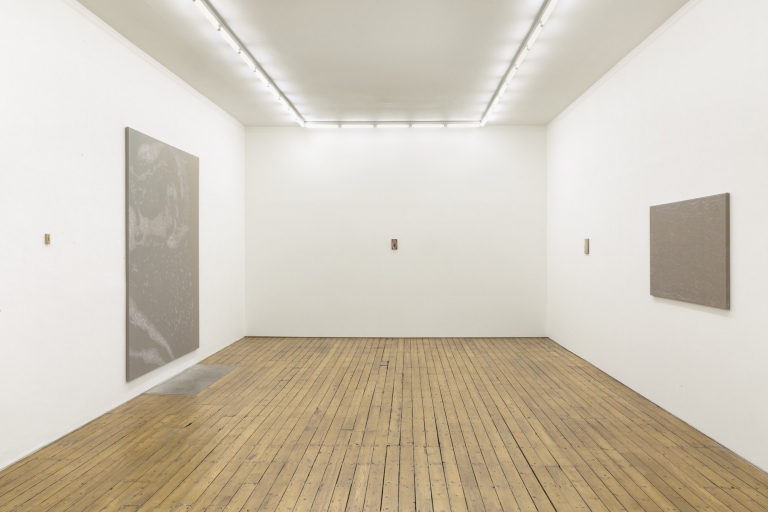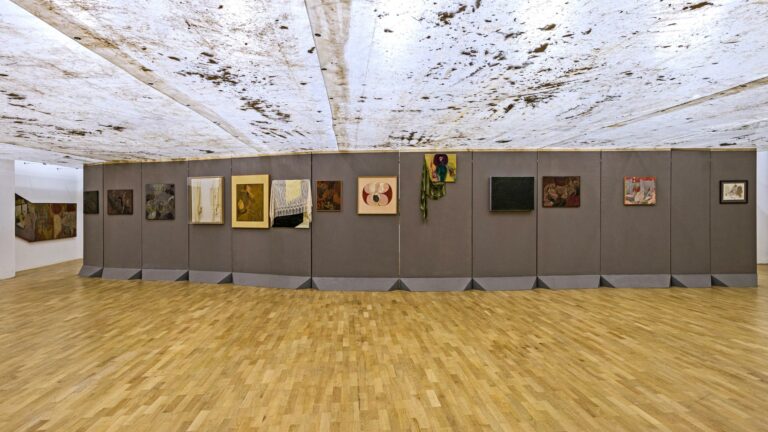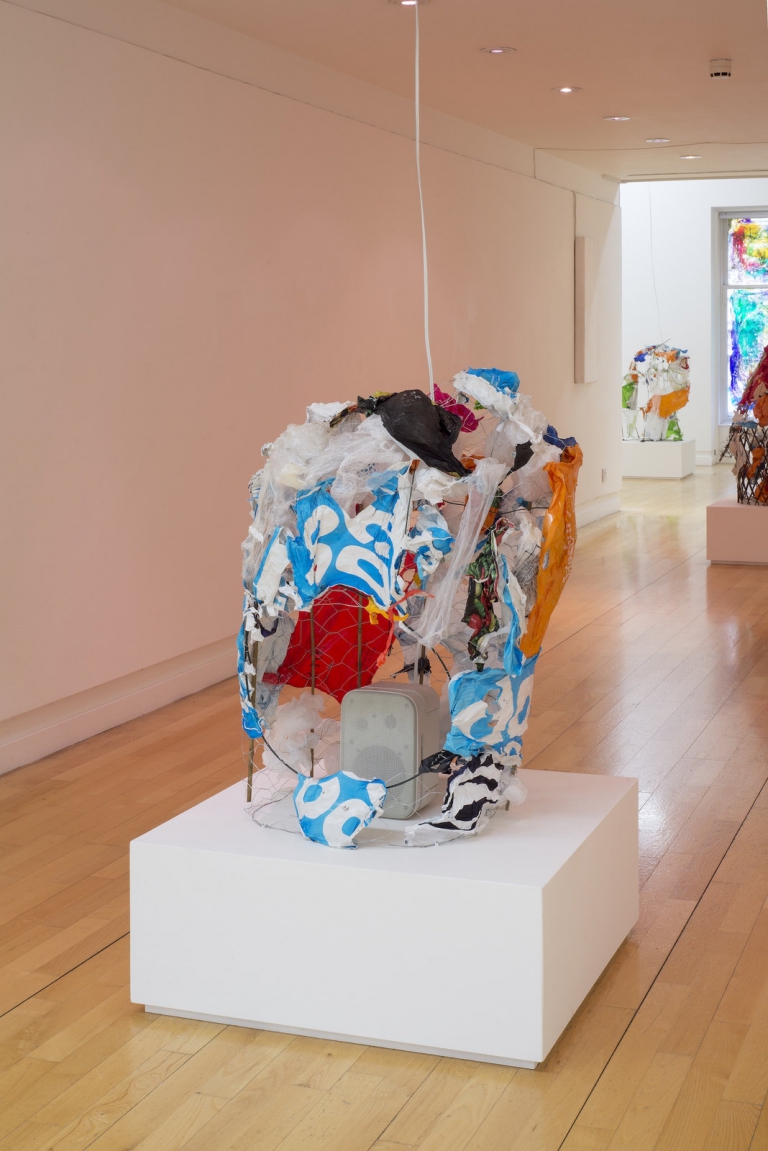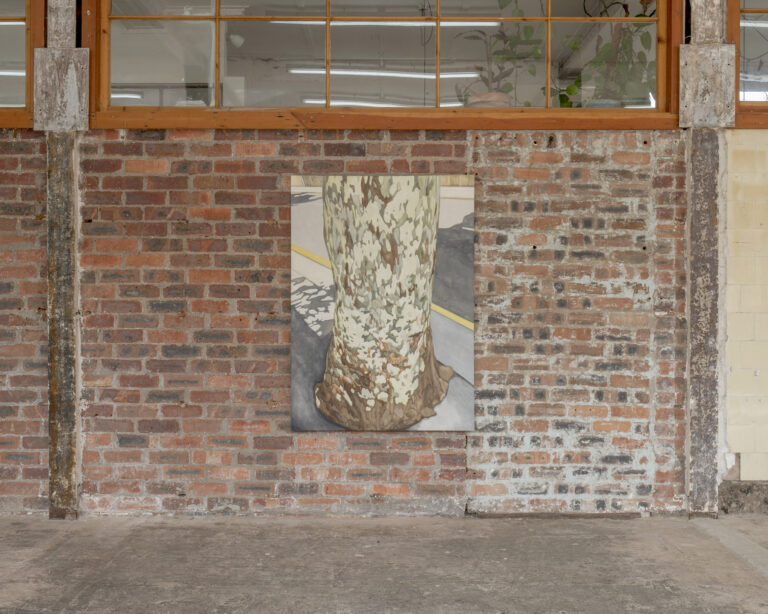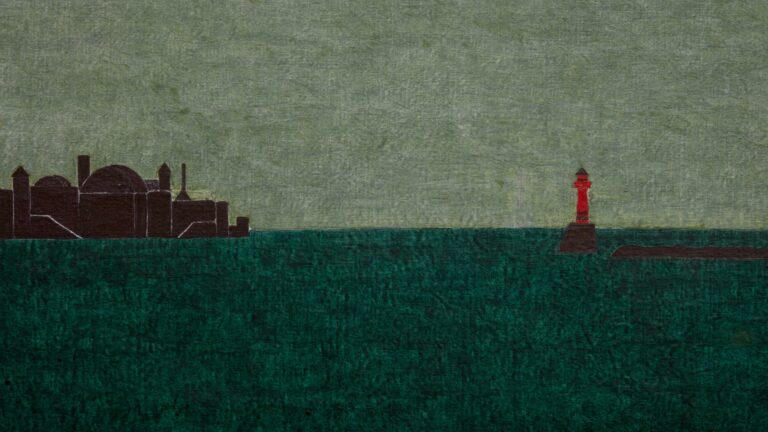Artist: Paul Bonnet
Exhibition title: Abeyance
Venue: MAMOTH, London, UK
Date: March 22 – May 4, 2024
Photography: all images copyright and courtesy of the artist and MAMOTH, London
MAMOTH is delighted to announce the London debut of French artist Paul Bonnet with the solo show Abeyance, running from 22nd March until 4th May, 2024.
Paul Bonnet’s haunted dreamscapes have the appearance of molten wax. The oil has been daubed and smeared onto the canvas forming stratigraphic layers. They form the depths and shallows of an imagined environment depicted long after the human has finished figuring themselves at its centre. Bonnet’s scenes of overgrowth, collapse and ruin draw the viewer to consider what comes inevitably next, far off in the centuries that will follow the impending collapse of our Anthropocene.
The series of seven large canvasses depict Ballardian vistas that call to mind his post-apocalyptical novel The Drowned World. Sinews reminiscent of the decaying human body, decrepit leftovers of the domestic rooms of Parisian bâtiments, and the creeping tendrils of a jungle home to a tropic pushed unnaturally northward bleed together in an act of painterly speculative abstraction. Human forms, their bodies and their cityscapes, have been broken down into object matter by an environment that has adapted in our absence, persisted, and here thrives. The paintings catch in snapshot these decaying remains long into a process of digestion, and reconstitution into something else. In Figures in Landscape (all works 2024) and Lie torpid (coral pillows) what once was human sobs before the floating orbs of other astral planes opened into the landscape, or lays underneath a thin shroud before a large window showing an empty sky at late-twilight. Walls, decaying curtain fabric, window frames and pillows in this image present a fossilised human interior, a domestic life long since bereft of any sense of being lived in. In both images, though the leavings of human gestures are present upon the objects, they have long since calcified into archaeological matter. They look something like the plaster casts of victims of the catastrophe at Pompeii, huddled into bundled hints of a body made ash.
The post-human corpse is present also in Fortunate Hours, where the celestial bodies of a cresting moon and waning sun follow one another in cycle through the crepuscule, far off behind lilting tendrils of willow trees. High up within the trees, bent human arms hang. Their revivified fingers reach out from among the branches. This is again present in Dinner Scene with Embedded Fossil. In the centre of the canvas a large cockroach scuttles among empty drinking vessels, its wings poised to take flight. The underneath of its carapace looks back at the viewer from the scene of a dinner table long abandoned, formed of the empty features of two partial human faces ripped from their former hosts and now repurposed.

